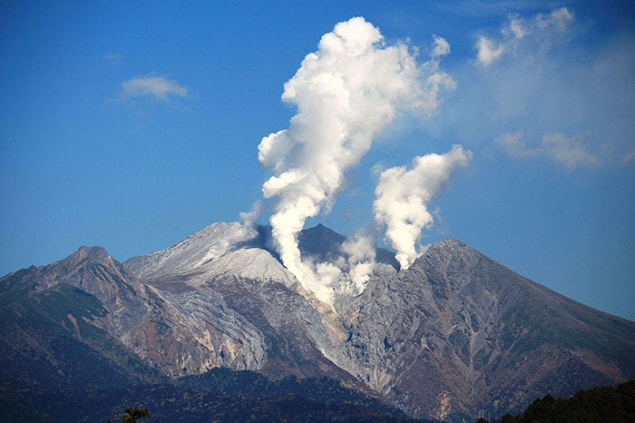
Volcanic ballistics are fragments of lava and rock – ranging in size from a few centimetres to tens of metres in diameter – expelled by explosive eruptions at temperatures reaching over 1000 °C. Hurtling through the air at speeds reaching hundreds of metres per second, they travel in parabolic arcs and are capable of striking ground up to 10 km from the volcano that launched them. Despite presenting a significant hazard to people and infrastructure, vulnerability assessments for these ballistics – from which risk-management strategies can be developed – are lacking.
In a new study, however, Tom Wilson and colleagues at the University of Canterbury in New Zealand and the Mount Fuji Research Institute in Japan, simulated the impact of volcanic projectiles by using a pneumatic cannon to fire real volcanic rocks into sections of wall and roof claddings. This is the first ballistics study to use rocks of realistic sizes and weights to simulate volcanic bombs, rather than – for example – putty-based projectiles. Four commonly used cladding types were tested – sheet metal, timber planks, timber weatherboard and reinforced concrete – each of which were mounted to a timber frame. Various impact velocities, masses and angles were used to find the threshold of different damage severities. Each impact was recorded, from which the ballistic velocity, impact trajectory and path of resulting shrapnel was measured.
Real-life events
The team compared this data with measurements they took of ballistic impacts to real-life buildings following the recent eruptions of Japan’s Mount Ontake and Mount Usu, along with similar data already recorded from other volcanoes across the globe, looking for similarities in damage patterns.
From all their results, the researchers developed models of building vulnerability to a ballistic strike from a volcanic eruption. They found that concrete was the most impact resistant material, and that the more oblique the impact, the less damage it caused – although oblique impactors, and the building shrapnel they create, tended to ricochet further off the cladding. In addition, buildings can offer enhanced impact resistance when volcanic bombs strike them in areas directly supported by their frame structure.
Seeking shelter
The team concludes that the ideal place to shelter in would be the far side of a building with a reinforced concrete roof, dense framing structure, multiple floors, and a secondary interior layer – and could be enhanced by piling up furniture, mattresses, etc, to add more layers of shielding – although, overall, any structure is safer than none.
The study is described in Journal of Volcanology and Geothermal Research.



